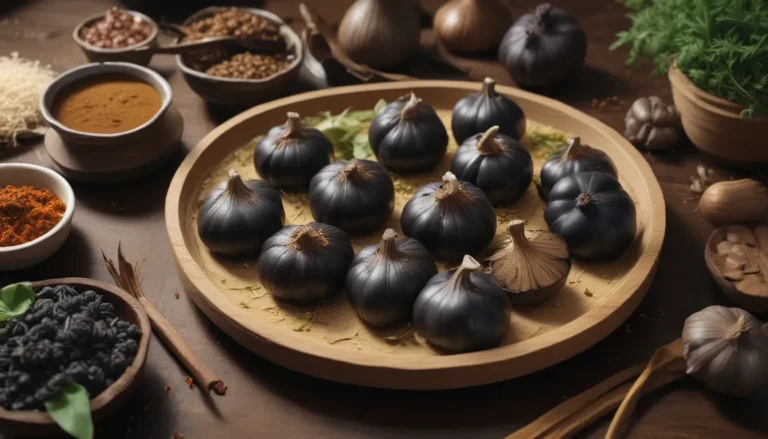The Complete Guide to Planting and Growing Marjoram in Your Herb Garden

When it comes to herbs, oregano often steals the show, but its lesser-known cousin, marjoram, deserves its own spotlight in the garden. With a sweet, woodsy flavor reminiscent of mild sage and a touch of camphor, marjoram is a versatile herb that can add elegance to your culinary creations.
If you have a sunny, dry spot in your garden where other plants struggle to thrive, marjoram is the perfect choice. Its pretty purple or pink blossoms also attract beneficial pollinators like honeybees, bumblebees, and butterflies. Ready to add this versatile herb to your yard? Here’s everything you need to know.
What Is Marjoram?
Marjoram, known scientifically as Origanum majorana, closely resembles oregano (O. vulgare). Both belong to the Origanum genus, with oregano sometimes called “wild marjoram” and Cretan oregano (O. onites) known as “pot marjoram.”
Marjoram boasts small, gray-green leaves covered in soft hairs, with pink or purple blossoms appearing in spring if allowed to bloom. In comparison to oregano, marjoram offers a woodier, more floral flavor with hints of pine. While oregano can be aggressive and cold-tolerant, marjoram prefers milder climates and can be grown as an annual in cooler areas.
Perennials in Zones 9 and 10, marjoram plants reach about 24 inches tall and 18 inches wide, making it an excellent addition to your herb garden. Its delicate flavor makes it a staple in French blends like herbes de Provence.
Cultivation and History
Native to the Mediterranean, southwest Asia, and northern Africa, marjoram has a rich history dating back to ancient civilizations. Revered by Greeks, Romans, and Egyptians, it was used in embalming and culinary practices.
Over time, marjoram made its way to European settlements like New York’s Hudson Valley before gaining popularity across the US in the mid-1900s. Folk remedies often featured marjoram for common ailments due to its purported health benefits.
Recent studies reveal that marjoram essential oils contain antioxidants and possess antifungal, antibacterial, and anti-inflammatory properties.
Marjoram Plant Propagation
Marjoram, a prolific reproducer, can be propagated through various methods such as seeds, division, cuttings, and layering. Regardless of the chosen method, ensure the soil is fertile with proper drainage by incorporating compost before planting.
By Seed
Starting marjoram from seed is straightforward, with plants self-seeding readily in ideal conditions. Begin indoors eight weeks before the last frost or directly sow seeds outdoors after all frost danger has passed.
Upon emergence, thin outdoor seedlings to six inches apart. Remember to harden off indoor starts before transplanting them.
By Division
Spring is the ideal time for dividing marjoram plants. Dig a hole around the plant and split it, replanting one half while relocating the other to a prepared spot.
Alternatively, use a spade or trowel to cut a plant section with roots for transplantation.
Via Cuttings
Select a healthy branch in late spring or early summer, preparing a pot with seed starting mix. Apply rooting hormone to the cutting and keep it in a shaded area until roots develop.
By Layering
Propagating via layering involves burying a branch tip while leaving some exposed. Once roots develop, separate the new plant from the parent and transplant.
How to Grow Marjoram Plants
Marjoram thrives in fertile, well-draining soil with neutral pH levels and full sun exposure. Avoid overwatering to prevent root rot, as marjoram prefers slightly dry conditions. Prune after flowering to stimulate new growth and maintain plant health.
Growing Tips
- Grow marjoram in full sun.
- Allow the soil to dry out slightly between waterings.
- Trim back plants in spring or fall.
Where to Buy
Marjoram plants, often sold as “sweet marjoram,” are readily available at local nurseries, garden centers, and online retailers. Consider purchasing classic or hybrid varieties suitable for your garden’s needs.
Managing Pests and Disease
While marjoram is relatively pest and disease-resistant, occasional issues may arise. Common pests include aphids, cutworms, spider mites, and thrips, with mint rust being a notable disease to watch for.
Pests
- Aphids: Remedy infestations by blasting plants with water or using canola oil spray.
- Cutworms: Prevent cutworm damage by clearing the base of plants and using diatomaceous earth or cardboard collars.
- Spider Mites: Control spider mites with water spray, beneficial insects, or insecticidal soap.
- Thrips: Employ reflective mulches or resort to insecticides for thrip management.
Disease
- Mint Rust: Control rust by maintaining proper plant spacing, watering practices, and using fungicides when necessary.
Harvesting Marjoram
For optimal flavor, harvest marjoram leaves before flowering. Prune as needed, ensuring plants remain healthy and productive.
Preserving
Preserve marjoram by air-drying young branches or leaves, freezing them in airtight bags, or making herbed oils. Store fresh marjoram in the refrigerator for up to four days.
Recipes and Cooking Ideas
Marjoram’s delicate flavor enhances meat dishes, tomato recipes, and salads. Use fresh leaves to elevate dips, dressings, or sauces with a touch of elegance. Remember to add marjoram towards the end of cooking to preserve its subtle taste.
Quick Reference Growing Guide
- Plant Type: Perennial herb
- Water Needs: Low
- Native to: Mediterranean, western Asia
- Hardiness (USDA Zone): 7-9
- Exposure: Full sun
- Time to Maturity: 70-90 days
- Height: 12-24 inches
- Spread: 12-18 inches
- Soil Type: Rich, loamy, sandy
- Soil pH: 4.9-8.7 (7.0 ideal)
- Maintenance: Low
Give Sophisticated Marjoram a Grow
With its subtle flavor, ease of cultivation, and added benefits to pollinators, marjoram is a valuable addition to any herb garden. Embrace this versatile herb’s culinary potential and enjoy its beauty in your outdoor space.
Are you considering growing marjoram in your garden? Share your ideas for using this herb in the comments below! Don’t forget to explore our guides for more herb gardening tips and inspiration.





